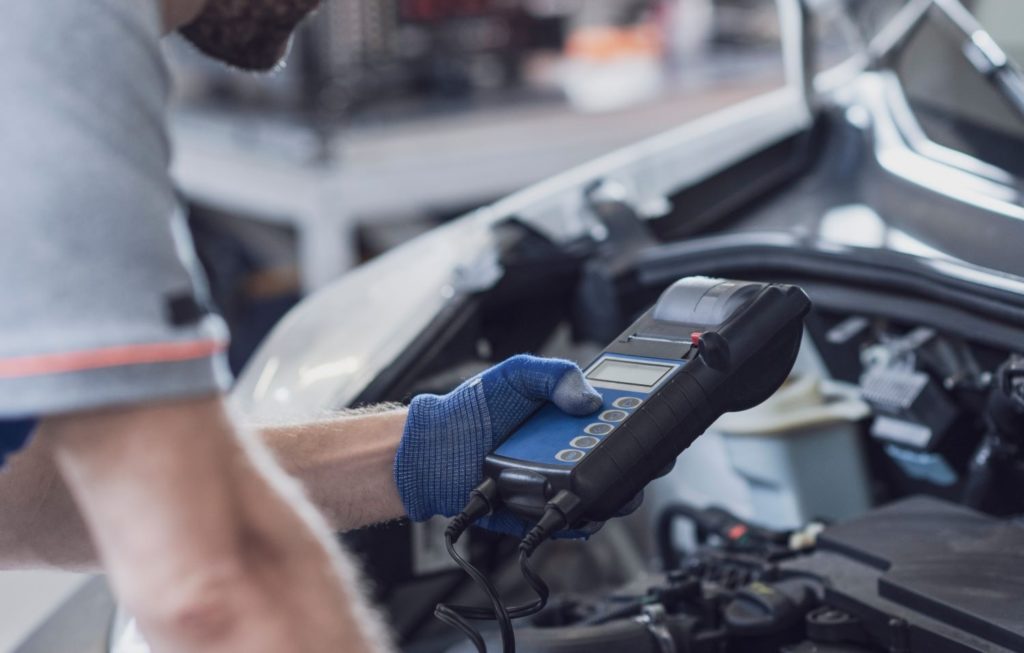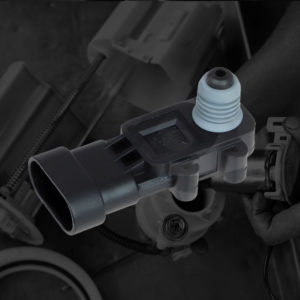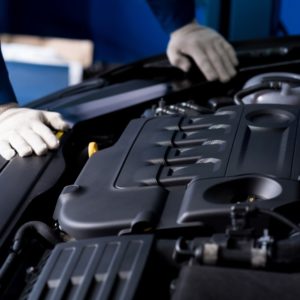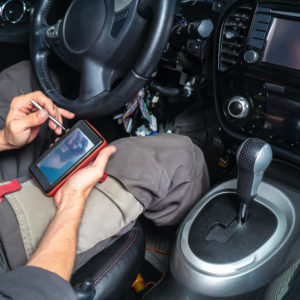One of the trouble codes you might encounter when you connect a scan tool to your vehicle is P2033. Before getting started on clearing this code, you first have to answer the question “what is a P2033 code?”
What Does the P2033 Code Mean?
Diagnostic trouble code (DTC) P2033 code stands for “Exhaust Gas Temperature Sensor Circuit High Bank 1 Sensor 2.” This code applies to most vehicles manufactured from 1996 onwards.
A P2033 code can be stored in your vehicle’s powertrain control module (PCM) due to a variety of factors. The code can refer to a high voltage condition in the exhaust gas temperature (EGT) sensor located near the catalytic converter. The EGT sensor is a heat sensitive resistor that converts the exhaust temperature into a voltage signal for the PCM. It’s designed to protect the catalytic converter from heat damage. If the PCM receives a high voltage signal from the EGT sensor, it will adjust the engine timing or fuel ratio to keep the catalytic converter within the ideal temperature range.

A P2033 code can also be stored if the catalytic converter and EGT sensor are removed. If the EGT sensor is unable to function without back pressure, the PCM might set the code. To keep your vehicle from experiencing additional issues, you must immediately troubleshoot this code.
Note: The definition of code P2033 might be different depending on the vehicle manufacturer. Consult the appropriate repair manual or repair database for the exact code definition.
What are the Common Causes of the P2033 Code?
A P2033 code can be caused by a number of factors. Here are some of the most common causes of P2033 code.
- Loose or corroded connectors or terminals
- Broken wires or missing insulation
- Malfunctioning EGT sensor
- Removal of catalytic converter and EGT sensor
- Faulty PCM

What are the Common Symptoms of the P2033 Code?
The symptoms of a P2033 code aren’t readily recognizable. If your PCM is storing this code, you might notice the following symptoms.
- Illuminated check engine light
- Decreased engine performance

How to Diagnose the P2033 Code
Diagnosing a 2033 code can be complicated. You’ll have to consult your vehicle’s repair manual to learn its recommended diagnostic and repair procedures. The following video features a basic guide on how to diagnose this code, but you still need to do some research to get a better understanding of your vehicle’s problems.
How to Fix the P2033 Code
There’s more than one way to resolve a P2033 code. Keep in mind that your vehicle’s make and model will determine its diagnostic and repair procedures. What might work to resolve a P2033 code for a Ford might not work for a Honda. If you don’t have the required skills and knowledge to fix this DTC, we recommend asking a mechanic to do the repairs for you.
However, if you want to troubleshoot this code yourself, you should start by researching your vehicle’s common problems. Fortunately, there are a lot of OBD-II resources out there. You can get Chilton repair manuals that contain useful information. ALLDATA has a single-vehicle subscription service that should help you figure things out.
Any information provided on this Website is for informational purposes only and is not intended to replace consultation with a professional mechanic. The accuracy and timeliness of the information may change from the time of publication.


















